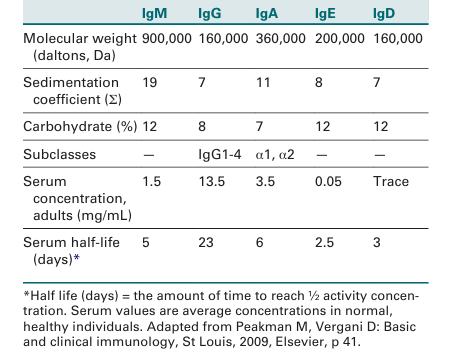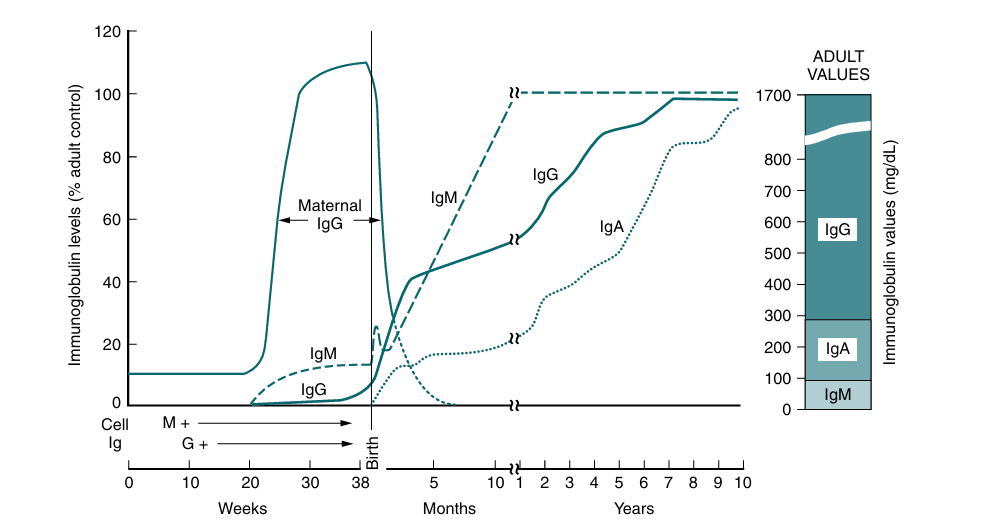

النبات

مواضيع عامة في علم النبات

الجذور - السيقان - الأوراق

النباتات الوعائية واللاوعائية

البذور (مغطاة البذور - عاريات البذور)

الطحالب

النباتات الطبية


الحيوان

مواضيع عامة في علم الحيوان

علم التشريح

التنوع الإحيائي

البايلوجيا الخلوية


الأحياء المجهرية

البكتيريا

الفطريات

الطفيليات

الفايروسات


علم الأمراض

الاورام

الامراض الوراثية

الامراض المناعية

الامراض المدارية

اضطرابات الدورة الدموية

مواضيع عامة في علم الامراض

الحشرات


التقانة الإحيائية

مواضيع عامة في التقانة الإحيائية


التقنية الحيوية المكروبية

التقنية الحيوية والميكروبات

الفعاليات الحيوية

وراثة الاحياء المجهرية

تصنيف الاحياء المجهرية

الاحياء المجهرية في الطبيعة

أيض الاجهاد

التقنية الحيوية والبيئة

التقنية الحيوية والطب

التقنية الحيوية والزراعة

التقنية الحيوية والصناعة

التقنية الحيوية والطاقة

البحار والطحالب الصغيرة

عزل البروتين

هندسة الجينات


التقنية الحياتية النانوية

مفاهيم التقنية الحيوية النانوية

التراكيب النانوية والمجاهر المستخدمة في رؤيتها

تصنيع وتخليق المواد النانوية

تطبيقات التقنية النانوية والحيوية النانوية

الرقائق والمتحسسات الحيوية

المصفوفات المجهرية وحاسوب الدنا

اللقاحات

البيئة والتلوث


علم الأجنة

اعضاء التكاثر وتشكل الاعراس

الاخصاب

التشطر

العصيبة وتشكل الجسيدات

تشكل اللواحق الجنينية

تكون المعيدة وظهور الطبقات الجنينية

مقدمة لعلم الاجنة


الأحياء الجزيئي

مواضيع عامة في الاحياء الجزيئي


علم وظائف الأعضاء


الغدد

مواضيع عامة في الغدد

الغدد الصم و هرموناتها

الجسم تحت السريري

الغدة النخامية

الغدة الكظرية

الغدة التناسلية

الغدة الدرقية والجار الدرقية

الغدة البنكرياسية

الغدة الصنوبرية

مواضيع عامة في علم وظائف الاعضاء

الخلية الحيوانية

الجهاز العصبي

أعضاء الحس

الجهاز العضلي

السوائل الجسمية

الجهاز الدوري والليمف

الجهاز التنفسي

الجهاز الهضمي

الجهاز البولي


المضادات الميكروبية

مواضيع عامة في المضادات الميكروبية

مضادات البكتيريا

مضادات الفطريات

مضادات الطفيليات

مضادات الفايروسات

علم الخلية

الوراثة

الأحياء العامة

المناعة

التحليلات المرضية

الكيمياء الحيوية

مواضيع متنوعة أخرى

الانزيمات
IMMUNOGLOBULIN (IG) CLASSES
المؤلف:
Mary Louise Turgeon
المصدر:
Immunology & Serology in Laboratory Medicine
الجزء والصفحة:
5th E , P14-16
2025-01-27
952
Five distinct classes of immunoglobulin molecules are recognized in most higher mammals—IgM, IgG, IgA, IgD, and IgE. These Ig classes differ from each other in characteristics such as MW and sedimentation coefficients (Table 1).

Tble1. Characteristics of Immunoglobulin Classes
Immunoglobulin M
Immunoglobulin M accounts for about 10% of the Ig pool and is largely confined to the intravascular pool because of its large size. This antibody is produced early in an immune response and is largely confined to the blood. IgM is effective in agglutination and cytolytic reactions. In humans, IgM is found in smaller concentrations than IgG or IgA. The molecule has five individual heavy chains, with an MW of 65,000 Da; the whole molecule has an MW of 900,000 Da and sedimentation coefficient, Σ, of 19.
Normal values of IgM are 60 to 250 mg/dL (70 to 290 IU/ mL) for males and 70 to 280 mg/dL (80 to 320 IU/mL) for females. At 4 months of age, 50% of the adult level is present; adult levels are reached by 8 to 15 years. Cord blood contains greater than 20 mg/dL. IgM is usually undetectable in cerebrospinal fluid (CSF). IgM is decreased in primary (genetically determined) Ig disorders as well as secondary Ig deficiencies (acquired disorders associated with certain diseases). IgM can be increased in the following conditions:
• Infectious diseases, such as subacute bacterial endocarditis, infectious mononucleosis, leprosy, trypanosomiasis, malaria, and actinomycosis
• Collagen disorders, such as scleroderma
• Hematologic disorders, such as polyclonal gammopathies, monocytic leukemia, and monoclonal gammopathies (e.g., Waldenström’s macroglobulinemia)
Immunoglobulin G
The major immunoglobulin in normal serum is IgG. It diffuses more readily than other immunoglobulins into the extravascular spaces and neutralizes toxins or binds to microorganisms in extravascular spaces. IgG can cross the placenta. In addition, when IgG complexes are formed, complement can be activated. IgG accounts for 70% to 75% of the total Ig pool. It is a 7S molecule, with an MW of approximately 150,000 Da. One of the subclasses, IgG3, is slightly larger (170,000 Da) than the other subclasses.
Normal human adult serum values of IgG are 800 to 1800 mg/dL (90 to 210 IU/mL). In infants 3 to 4 months old, the IgG level is approximately 350 to 400 mg/dL (40 to 45 IU/ mL), gradually increasing to 700 to 800 mg/dL (80 to 90 IU/ mL) by the end of the first year of life (Fig. 1). The average adult level is achieved before age 16 years. Other body fluids containing IgG include cord blood (800 to 1800 mg/dL) and CSF (2 to 4 mg/dL).
Decreased levels of IgG can be manifested in primary (genetic) or secondary (acquired) Ig deficiencies. Significant increases of IgG are seen in the following conditions:
• Infectious diseases, such as hepatitis, rubella, and infectious mononucleosis
• Collagen disorders, such as rheumatoid arthritis and systemic lupus erythematosus
• Hematologic disorders, such as polyclonal gammopathies, monoclonal gammopathies, monocytic leukemia, and Hodgkin’s disease

fig1. Immunoglobulin concentration in newborns, infants, and children. (Adapted from Bauer JD: Clinical laboratory methods, ed 9, St Louis, 1982, Mosby.
Immunoglobulin A
Immunoglobulin A represents 15% to 20% of the total circulatory Ig pool. It is the predominant immunoglobulin in secretions such as tears, saliva, colostrum, milk, and intestinal f luids. IgA is synthesized largely by plasma cells located on body surfaces. If produced by cells in the intestinal wall, IgA may pass directly into the intestinal lumen or diffuse into the blood circulation. As IgA is transported through intestinal epithelial cells or hepatocytes, it binds to a glycoprotein called the secretory component. The secretory piece protects IgA from digestion by gastrointestinal proteolytic enzymes. It forms a complex molecule termed secretory IgA, which is critical in protecting body surfaces against invading microorganisms because of its presence in seromucous secretions (e.g., tears, saliva, nasal fluids, colostrum).
IgA monomer is present in relatively high concentrations in human serum; it has a concentration of 90 to 450 mg/dL (55 to 270 IU/mL) in normal adult humans. At the end of the first year of life, 25% of the adult IgA level is reached, and 50% at 3.5 years of age. The average adult level is attained by age 16 years. IgA concentration in cord blood is greater than 1 mg/dL; CSF contains 0.1 to 0.6 mg/dL of IgA.
IgA is decreased in primary or secondary Ig deficiencies. Significant increases in serum IgA concentration are associated with the following:
• Infectious diseases, such as tuberculosis and actinomycosis
• Collagen disorders, such as rheumatoid arthritis
• Hematologic disorders, such as polyclonal gammopathies, monocytic leukemia, and monoclonal gammopathy (e.g., IgA myeloma)
• Liver disease, such as Laennec’s cirrhosis and chronic active hepatitis
Immunoglobulin D
Immunoglobulin D is found in very low concentrations in plasma, accounting for less than 1% of the total Ig pool. IgD is extremely susceptible to proteolysis and is primarily a cell membrane Ig found on the surface of B lymphocytes in association with IgM.
Immunoglobulin E
Immunoglobulin E is a trace plasma protein found in the blood plasma of unparasitized individuals (MW, 188,000 Da). IgE is crucial because it mediates some types of hypersensitivity (allergic) reactions, allergies, and anaphylaxis and is generally responsible for an individual’s immunity to invading parasites. T he IgE molecule is unique in that it binds strongly to a receptor on mast cells and basophils and, together with antigen, mediates the release of histamines and heparin from these cells.
 الاكثر قراءة في المناعة
الاكثر قراءة في المناعة
 اخر الاخبار
اخر الاخبار
اخبار العتبة العباسية المقدسة

الآخبار الصحية















 قسم الشؤون الفكرية يصدر كتاباً يوثق تاريخ السدانة في العتبة العباسية المقدسة
قسم الشؤون الفكرية يصدر كتاباً يوثق تاريخ السدانة في العتبة العباسية المقدسة "المهمة".. إصدار قصصي يوثّق القصص الفائزة في مسابقة فتوى الدفاع المقدسة للقصة القصيرة
"المهمة".. إصدار قصصي يوثّق القصص الفائزة في مسابقة فتوى الدفاع المقدسة للقصة القصيرة (نوافذ).. إصدار أدبي يوثق القصص الفائزة في مسابقة الإمام العسكري (عليه السلام)
(نوافذ).. إصدار أدبي يوثق القصص الفائزة في مسابقة الإمام العسكري (عليه السلام)


















